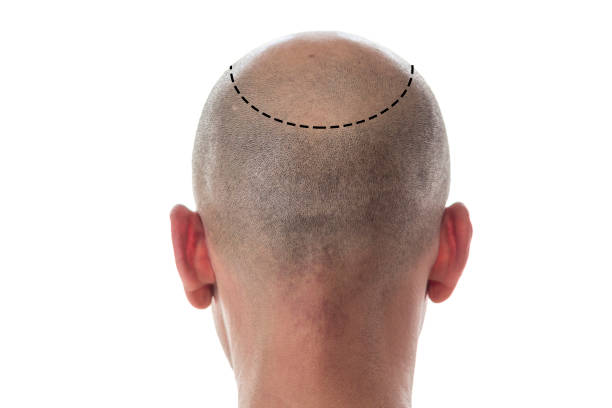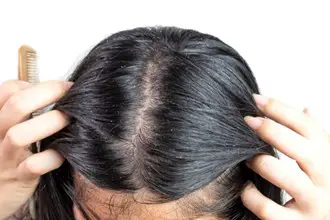Uncover the crucial role of a scalp biopsy for hair loss in our comprehensive guide. Learn about the procedure, potential side effects, costs, and more. Empower yourself with knowledge and take the first step towards effective hair loss treatment today.
Hair loss can be a distressing experience, impacting not only our appearance but also our self-esteem. While there are numerous causes and types of hair loss, understanding the root cause is crucial for effective treatment. This is where a scalp biopsy comes into play. A scalp biopsy is a diagnostic tool that can provide valuable insights into the health of your scalp and the underlying reasons for hair loss.
In this comprehensive guide, we will delve deep into the world of scalp biopsies. We will explore what a scalp biopsy is, how it can help diagnose various forms of hair loss, what to expect during the procedure, potential side effects, and the cost implications.
Whether you’re someone experiencing hair loss, a healthcare professional, or simply curious, this guide will provide you with in-depth knowledge about scalp biopsies. So, let’s embark on this journey to understand more about this important diagnostic tool.
If you’re interested in learning more about hair loss in general, don’t forget to check out our detailed guide on male pattern baldness. It’s a great resource that explains the stages of balding and offers insights into possible treatments.
Key Takeaways
- A scalp biopsy for hair loss is a crucial diagnostic tool that can help identify the cause of hair loss, guiding effective treatment strategies.
- The procedure is generally safe with temporary side effects, and hair typically grows back after a biopsy.
- Costs for a scalp biopsy can vary widely, but health insurance may cover part or all of the cost.
- Products like Hair and Scalp Synergy can support the health of your scalp and hair during this process, promoting stronger, thicker, and fuller-looking hair growth.
- Early intervention and a proactive approach to hair loss, including understanding diagnostic procedures like scalp biopsies, can lead to better outcomes and potentially reverse hair loss.
What is a Scalp Biopsy?
A scalp biopsy is a medical procedure that involves removing a small piece of skin from your scalp for examination under a microscope. This procedure is typically performed by a dermatologist and is used to diagnose a variety of conditions, including hair loss.
The process begins with the application of a local anesthetic to numb the area. Then, using a special circular tool, the dermatologist removes a small section of your scalp, usually about 4mm in diameter. This sample is then sent to a laboratory where it is examined by a pathologist.
The pathologist will look at the sample under a microscope to examine the hair follicles, blood vessels, and other structures. They will look for any abnormalities that might explain why you’re experiencing hair loss.
A scalp biopsy can diagnose a wide range of hair loss conditions, including:
- Androgenetic alopecia (male or female pattern baldness)
- Alopecia areata (an autoimmune disease that causes hair loss)
- Telogen effluvium (temporary hair thinning over the scalp)
- Scarring alopecia (hair loss due to scarring of the scalp)
- Tinea capitis (a fungal infection of the scalp)
Understanding the cause of your hair loss is the first step towards effective treatment. If you’re dealing with hair loss and aren’t sure why, a scalp biopsy could provide the answers you need.
For more information about different types of hair loss, check out our article on Diffuse Unpatterned Alopecia (DUPA). It provides a detailed overview of this specific type of hair loss and offers insights into its diagnosis and treatment.
In the next section, we’ll explore the different forms of hair loss that can be diagnosed through a scalp biopsy. Stay tuned!
Different Forms of Hair Loss Diagnosed Through Scalp Biopsy
Hair loss, medically known as alopecia, can occur due to various reasons. A scalp biopsy can help diagnose the specific type of hair loss, enabling targeted and effective treatment. Here are some common forms of hair loss that can be diagnosed through a scalp biopsy:
- Androgenetic Alopecia: Also known as male or female pattern baldness, this is the most common type of hair loss. It’s characterized by a distinct pattern of hair thinning and is primarily driven by genetic factors and hormones. A scalp biopsy can confirm the diagnosis by showing miniaturized hair follicles.
- Alopecia Areata: This is an autoimmune condition where the body’s immune system mistakenly attacks the hair follicles, leading to hair loss. A scalp biopsy can reveal “swarm of bees” inflammation around the hair follicles, a characteristic sign of alopecia areata.
- Telogen Effluvium: This temporary hair thinning over the scalp can occur due to stress, illness, or medication. A scalp biopsy can help identify an increased number of hair follicles in the telogen (resting) phase.
- Scarring Alopecia: Also known as cicatricial alopecia, this type of hair loss involves irreversible destruction of the hair follicles and their replacement with scar tissue. A scalp biopsy can show signs of inflammation and scarring.
- Tinea Capitis: This is a fungal infection of the scalp that primarily affects children. A scalp biopsy can help identify the fungus and the type of hair loss it’s causing.
Each of these conditions requires a different treatment approach, emphasizing the importance of accurate diagnosis. If you’re experiencing hair loss, a scalp biopsy can provide crucial insights into the underlying cause and guide the treatment plan.
For more information about different types of hair loss, you might find our article on Retrograde Alopecia helpful. It provides a detailed overview of this specific type of hair loss and offers insights into its diagnosis and treatment.
In the next section, we’ll walk you through the scalp biopsy procedure and what to expect during and after the process. Stay tuned!
The Scalp Biopsy Procedure: What to Expect
If you’re scheduled for a scalp biopsy, it’s natural to feel a bit anxious. Understanding the procedure can help alleviate some of this anxiety. Here’s what you can expect during and after a scalp biopsy:
Before the Procedure
Before the procedure, your dermatologist will explain the process and answer any questions you may have. It’s important to inform your doctor about any medications you’re taking, as some can interfere with the biopsy results or healing process.
During the Procedure
The scalp biopsy procedure is typically performed in a dermatologist’s office and takes about 15-30 minutes. Here’s a step-by-step breakdown of the process:
- The dermatologist will clean the biopsy site with an antiseptic solution.
- A local anesthetic will be injected into the scalp to numb the area.
- Using a special circular tool, the dermatologist will remove a small section of your scalp. You may feel a slight pressure, but it should not be painful.
- The sample will be placed in a container and sent to a laboratory for examination.
- The biopsy site will be stitched up and bandaged.
After the Procedure
After the procedure, you may experience some mild discomfort and swelling at the biopsy site. Over-the-counter pain relievers can help manage any pain. It’s important to keep the area clean and dry to prevent infection. Your dermatologist will provide specific aftercare instructions.
The stitches will usually be removed after 7-14 days. The biopsy results typically come back within 1-2 weeks. Your dermatologist will discuss the results with you and outline the next steps for treatment.
A scalp biopsy is a valuable tool in diagnosing hair loss. While the procedure may seem daunting, knowing what to expect can help you feel more prepared and confident.
While a scalp biopsy can provide valuable insights into the cause of your hair loss, it’s equally important to maintain the health of your scalp and hair during this process. One way to do this is by using products like Hair and Scalp Synergy. This product is designed to support the proper functions of the hair and scalp, promoting stronger, thicker, and fuller-looking hair growth. Check it out here.
If you’re dealing with hair loss and considering treatment options, you might find our article on how to reverse telogen effluvium helpful. It provides a detailed overview of this specific type of hair loss and offers insights into its diagnosis and treatment.
In the next section, we’ll explore the potential side effects of a scalp biopsy. Stay tuned!
Potential Side Effects of a Scalp Biopsy
Like any medical procedure, a scalp biopsy can have potential side effects. However, these are generally mild and temporary. Here are some side effects you might experience:
- Pain and Discomfort: You may feel some pain or discomfort at the biopsy site after the procedure. This is usually mild and can be managed with over-the-counter pain relievers.
- Swelling and Bruising: Some swelling and bruising around the biopsy site is normal and should subside within a few days.
- Bleeding: There may be some minor bleeding after the procedure. Applying pressure to the area can help stop the bleeding.
- Infection: Though rare, there’s a small risk of infection. Signs of infection include increased pain, redness, swelling, or pus at the biopsy site. If you notice any of these signs, contact your doctor immediately.
- Scarring: A small scar may form at the biopsy site. However, this is usually not noticeable as it’s covered by hair.
- Headache: Some people may experience a headache after the procedure. This is usually temporary and can be relieved with over-the-counter pain medication.
It’s important to follow your doctor’s aftercare instructions to minimize the risk of side effects and ensure proper healing. If you have any concerns or if the side effects persist, don’t hesitate to contact your healthcare provider.
If you’re dealing with hair loss and looking for effective solutions, you might find our article on hair loss products helpful. It provides a detailed overview of various products available in the market and offers insights into their effectiveness.
In the next section, we’ll discuss the cost of a scalp biopsy and insurance coverage. Stay tuned!
The Cost of a Scalp Biopsy and Insurance Coverage
The cost of a scalp biopsy can vary widely depending on several factors, including the healthcare provider, the geographical location, and whether or not you have health insurance.
On average, the cost of a scalp biopsy can range from $150 to $400. This cost typically includes the procedure itself and the laboratory analysis of the biopsy sample. However, additional costs may be incurred for the initial consultation, follow-up visits, or any necessary medications.
If you have health insurance, the cost of a scalp biopsy may be partially or fully covered. It’s important to check with your insurance provider to understand what’s covered and what you’ll be expected to pay out-of-pocket. Some insurance providers may require a referral from a primary care doctor before they will cover the cost of a scalp biopsy.
If you don’t have insurance, some healthcare providers may offer a payment plan or sliding scale fees based on income. It’s worth discussing these options with your healthcare provider.
While the cost of a scalp biopsy may seem high, it’s important to remember that accurately diagnosing the cause of hair loss is a crucial step towards effective treatment. A scalp biopsy can provide valuable insights that can guide your treatment plan and potentially save you money in the long run by avoiding ineffective treatments.
If you’re dealing with hair loss and looking for cost-effective solutions, you might find our article on capillus focal hair laser growth cap therapy. It provides a detailed overview of this specific type of hair loss and offers insights into its diagnosis and treatment.
In the next section, we’ll answer some frequently asked questions about scalp biopsies. Stay tuned!
Frequently Asked Questions About Scalp Biopsy for Hair Loss
In this section, we’ll answer some of the most frequently asked questions about scalp biopsy for hair loss.
1. Is a scalp biopsy painful?
The procedure itself is not painful as a local anesthetic is used to numb the area. However, you may experience some discomfort or mild pain after the anesthetic wears off.
2. How long does it take to get the results of a scalp biopsy?
The results of a scalp biopsy typically come back within 1-2 weeks. Your dermatologist will discuss the results with you and outline the next steps for treatment.
3. Will hair grow back after a scalp biopsy?
Yes, hair typically grows back after a scalp biopsy. However, if the biopsy is done in an area of scarring alopecia, the hair may not grow back.
4. What can a scalp biopsy detect?
A scalp biopsy can detect a wide range of conditions that cause hair loss, including androgenetic alopecia, alopecia areata, telogen effluvium, scarring alopecia, and tinea capitis.
5. Are there any side effects of a scalp biopsy?
Possible side effects of a scalp biopsy include pain, swelling, bruising, minor bleeding, infection, and scarring. However, these are generally mild and temporary.
If you’re dealing with hair loss and looking for more information, you might find our article on Male Pattern Baldness Stages Time helpful. It provides a detailed overview of this common type of hair loss and offers insights into its diagnosis and treatment.
In the next section, we’ll wrap up our discussion on scalp biopsies for hair loss. Stay tuned!
Conclusion
Understanding the cause of hair loss is the first step towards effective treatment, and a scalp biopsy can play a crucial role in this process. While the thought of a biopsy may seem daunting, it’s a relatively simple procedure that can provide valuable insights into the health of your scalp and hair follicles.
As you navigate your journey towards understanding and managing your hair loss, consider incorporating Hair and Scalp Synergy into your hair care routine. This product is designed to support the proper functions of the hair and scalp, promoting stronger, thicker, and fuller-looking hair growth. Order your Hair and Scalp Synergy now and take a proactive step towards healthier hair.
Remember, if you’re experiencing hair loss, you’re not alone. Millions of people worldwide are in the same boat, and there’s a wide range of treatments available to help manage and even reverse hair loss. The key is to seek help early and to be proactive in your approach.
We hope this article has provided you with a better understanding of scalp biopsies for hair loss. If you have any further questions or concerns, don’t hesitate to reach out to a healthcare professional.
Reference:
- The American Academy of Dermatology’s page on hair loss
- The Mayo Clinic’s page on scalp biopsy procedures
- AI Powered Bald Filter Online 2024: See Yourself with No Hair! - January 19, 2024
- Harklinikken Bad Reviews 2024: Analyzing Negative Feedbacks - January 18, 2024
- How to Get the Alex Eubank Hair | Step-By-Step Tutorial 2024 - January 18, 2024







